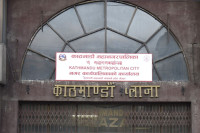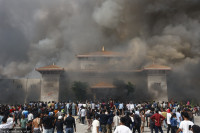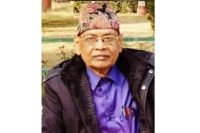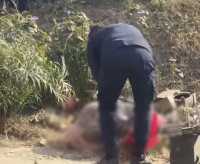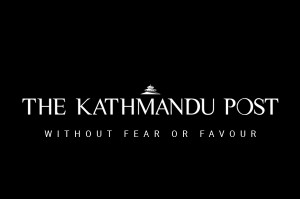Valley
Traffic police nab 149 for driving under influence
After the success of MaPaSe that started in 2011, traffic police introduced GaPaSe in January.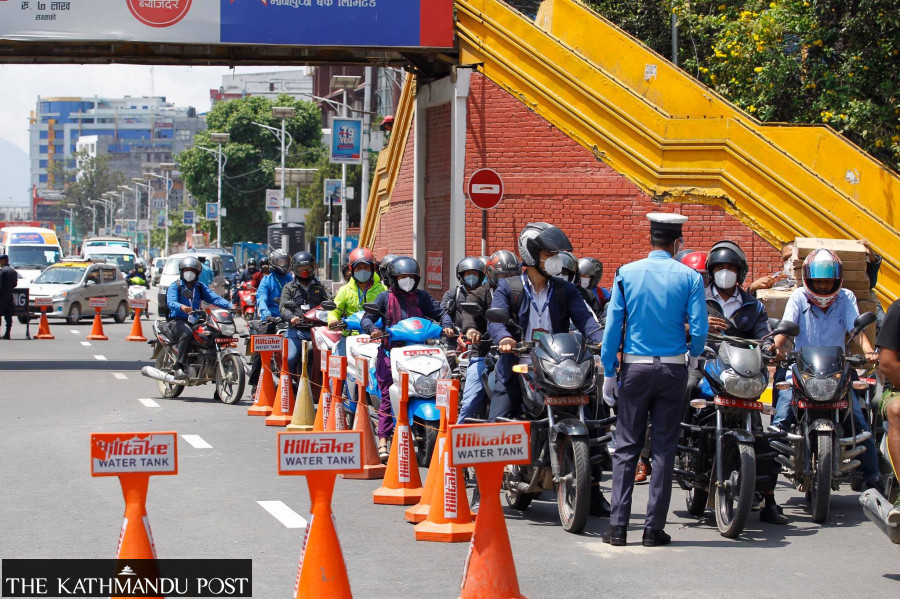
Post Report
Over the past six months, the Kathmandu Valley Traffic Police Office has nabbed 149 people for riding and driving on the road under the influence of banned substances, which is informally labelled GaPaSe, an acronym for ‘Ganja Padartha Sewan’ (marijuana consumption).
The Traffic Police office had started the drive in January with technical support from the Nepal Police Hospital and the Narcotics Control Bureau, Koteshwar. Along with the inspection team, there is also a lab technician who tests urine with THC rapid test (monoclonal antibody to selectively detect elevated levels of substance in urine).
The drive was introduced by former Traffic Police chief Mira Chaudhari, who was the first woman to lead the Kathmandu Valley Traffic Police. Speaking to the Post, she had said the purpose of introducing GaPaSe was to ensure road safety.
When the Post asked her the reason behind the drive, she had said that after the police made MaPaSe checks stringent, more people adopted other forms of drugs.
Although the Valley Traffic Police Office had announced the start of their new drive on September 25 last year, it began conducting rigorous checks only in January.
“This drive has now become very effective,” said Rajendra Prasad Bhatta, the spokesperson for the valley traffic.
According to Bishal Singh, an inspector who has been assigned to the field from the traffic headquarters, Baggikhana, traffic police and other volunteers in the field first talk to the drivers by stopping their vehicles and then examine their overt behaviour.
“We only prolong interviews by taking them to a separate place if we find their behaviour suspicious,” said Singh.
He said the report comes within two minutes. It confirms whether the person in question has taken a banned substance or not, even though the test does not pinpoint the substance in question.
“It works like a pregnancy kit, and we get prompt reports,” said Singh.
However, to further update the system, last month, the traffic police had announced to use ‘SoToxa’ handheld analyser kits that detect the presence of six kinds of drugs—cocaine, cannabis, methamphetamine, opintes, amphetamine and benzodiazepines—through a rapid examination of oral fluid. However, as they didn’t have the technical manpower to handle the kits, those are currently not being used.
Spokesperson Bhatta said once police use SoToxa, they don’t need to test the urine anymore. “Most of the riders or drivers booked by the police are those who take marijuana,” said Bhatta.
Nepal criminalised the sale, cultivation and consumption of marijuana after the introduction of Cannabis and Narcotics Drug Control Act 1976. Based on the Act, anyone in possession of cannabis will land in prison and be slapped with a fine of up to Rs25,000.
After the massive success of anti-drink driving initiative in the Kathmandu Valley since 2011, police started checking drivers regularly for use of banned substances on the roads in Kathmandu, mainly at the entry points of Kathmandu, such as Jagati in Bhaktapur, and at Thankot.
The Valley Traffic police data shows that since the anti-drink drive campaign began in 2011, as many as 404,337 people had been booked until January for driving under the influence.




 7.12°C Kathmandu
7.12°C Kathmandu
